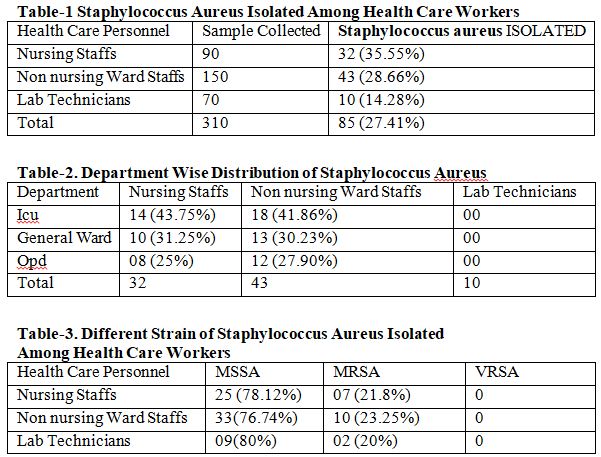Nasal Colonization of Staphylococcus Aureus, MRSA and VRSA among Health care Workers in a tertiary hospital
Abstract
Introduction: health care workers are always at risk of nosocomial infections. Nasal colonization by Staphylococcus aureus is a well known fact and lead to spread of infections to others .This Study was proposed to determine the carrier rate of Staphylococcus aures among different health care professionals working in our hospital and identification of MRSA and VRSA.
Material and methods: Nasal swabs were collected from the healthcare workers of various clinical departments and labs of the hospital over a period of 6 months. Staphylococcus aureus were isolated and their antimicrobial susceptibility patterns along with MRSA and VRSA were identified, total 100 nasal swabs were collected and processed.
Results: Out of 100 nasal swabs 90 had positive growth for Staphylococcus aureus. Among them 22 (24.4%) were nursing staffs, 40 (44.4%) ward boys and 28 (31.1%) lab technicians. MRSA was isolated 6 (27.2%) from nursing professionals, 10 (25%) from ward boys and 4 (14.2%) from lab technicians. None of the strain was found to be VRSA.
Conclusion: Health care workers are always at risk of nosocomial infection. Proper aseptic precautions with standard antibiotic policy and improved personal hygiene wound be paramount in control of nosocomial infections among health care workers.
Downloads
References

Copyright (c) 2021 Author (s). Published by Siddharth Health Research and Social Welfare Society

This work is licensed under a Creative Commons Attribution 4.0 International License.


 OAI - Open Archives Initiative
OAI - Open Archives Initiative


